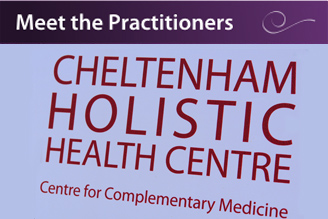Menopause and its symptoms – isn’t it great that we actually talk about it now? It is no longer taboo, it is simply another phase of life; in fact, probably another one third of a woman’s life is spent in menopause. Which means that there is another third of life to embrace and to make sure that you do everything possible to get through in the best shape that you can possibly be in – and sail through (hopefully) menopausal symptoms.
Did you know that in Japanese there is no word for hot flashes? There are parts of the world, Asia, especially Japan, that don’t even recognise it as a condition. Women of a menopausal age in these countries tend to experience less severe hot flashes, less insomnia, less night sweats or vaginal dryness, or increased heart rate. It is interesting to wonder why this is. Could it potentially be the difference in the way that we eat and fuel our bodies?
Phytoestrogens are known to be really beneficial to reducing menopausal symptoms. In most Asian cultures, the consumption of phytoestrogens is much much higher than here in the UK. Typically these women consume 50-200 mg of phytoestrogens (specifically isoflavones) daily, where as our in our diets it can be as low as 3-5 mg.
So what are Phytoestrogens, and how can we increase them? Phytoestrogens are plant foods which as the name suggests, have their own oestrogen-like components. They don’t add oestrogens to your body – so they won’t give you an excess or make you oestrogen dominant, but what they will do is balance up the ones that are already there.
They literally act like a key and stimulate beneficial effects in the brain, bone, heart and bladder. In the breast, womb and ovaries they can help to block the stimulation of somethings called alpha receptors, which can produce cancer. All in all, they are a good thing and something that we need plenty of in our diet – every day.
There are three main types, and here are a few ideas of how to make sure that you are getting plenty.
- Lignans – Flaxseeds are one of my favourite as they contain potent phytoestrogens. There’s research to suggest that they can help to reduce hot flushes and vaginal dryness. Ground flaxseeds are so simple to add into a bowl of porridge or overnight oats, or stir into a smoothie. The great thing about them is that they have a variety of plus points.
- They are chock full of good oils. These are the oils that help your skin and your heart.
- They are full of anti inflammatory fats and they help your body make to hormones too.
- Flaxseeds are one of the ultimate soluble fibre foods. Great for bulking out those bowel movements and flushing out your system, so to speak.
- Chia seeds are similar. Good for making up a chia pudding as an alternative to porridge. They have more fibre than flaxseeds and more calcium too – although less of an oestrogenic quality than flax.
- You can also use the ground flax or chia as an alternative for eggs in vegan cooking. Because the oil content is so high, when it’s mixed with water it has a binding effect similar to using an egg.
- Isoflavones – This second group of phytoestrogens are hopefully those that you may already use widely. Chickpeas, red kidney beans, cannellini beans, haricot, peas – all the legumes are wonderful sources of isoflavones. And what we should be aiming to do is to add some of these foods to our diet every single day.
- There are over 300 foods which contain isoflavones. But what you need here is variety, because those 300 foods all contain different types of isoflavone and each has a different benefit.
- It could be as hummus, or a lentil dhal, falafel or just padding out a casserole with some black beans. They are such versatile foods. Or a pea and ham soup for lunch? Or even a nice warming lentil and bacon soup? The possibilities are endless!
- When we think about including them in our diet then we should think about volume. For most women, our intake of peas, lentils, chickpeas is probably just a tablespoonful here and there. In parts of South East Asia these foods are staples.
If you’re still at the perimenopausal stage, then you could benefit by starting to add in a couple of portions a day since research has shown that A diet high in legumes delayed menopause on average by one-and-a-half years!
-
- Soya is a beneficial isoflavone but only if it is eaten in the traditional way. Often in this country it is completely over processed with products being made from soya protein isolates.
- Aim to buy organic whole soya bean products, or soya that is fermented, such as in tempeh, miso, Tofu, miso bean soy paste, and tamari.
- Coumestans are the final group of phytoestrogens. You find these specifically in sprouted mung and alfalfa beans.
- Sprouted seeds are always a great thing to add to your diet. If you think about what you are eating here, it’s the powerhouse of the plant.
- It’s full of nutrients – including enzymes which in turn affects how the body breaks down carbohydrates.
These are just a few of a myriad of things that can help you to feel more like yourself in the next phase of your life. We are all different, and finding what works for you is where I can help you. As a Nutritional Therapist I specialise in helping mid-lifers get themselves back on track. Why not book in for a Free Better Health Chat now and take steps to make sure that this phase is the best time of your life.








